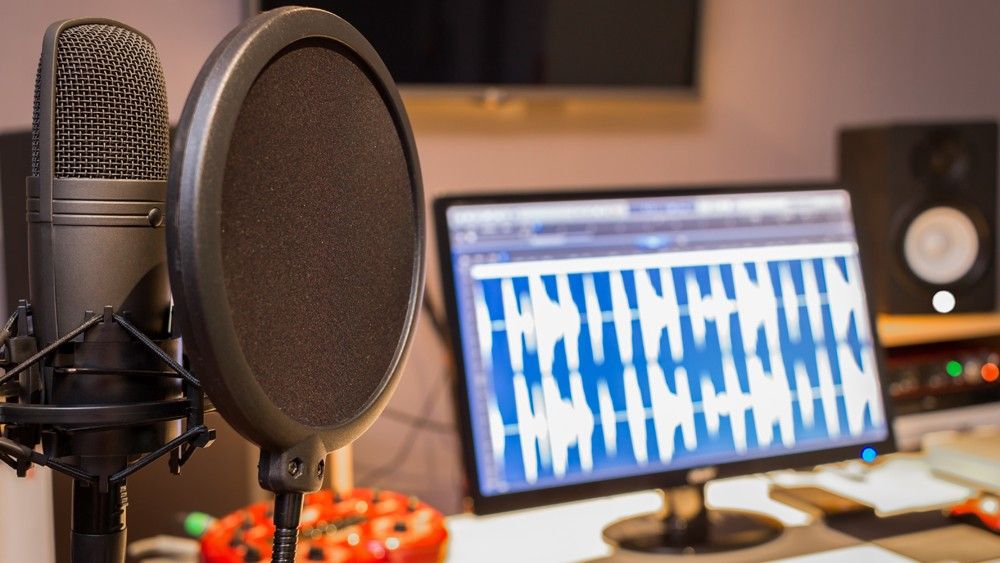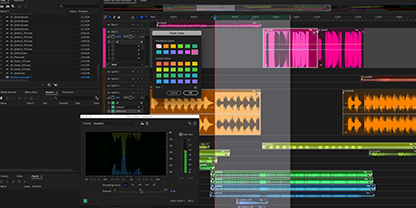Create, open, or import files in Adobe Audition; Importing with the Files panel; Extracting audio from CDs; Supported import formats; Navigate time and playing audio in Adobe Audition; Recording audio; Monitoring recording and playback levels; Editing audio files. Edit, repair, and improve audio using Essential Sound panel; Generating text-to. Whether you’re editing video files and looking to improve the audio quality or starting a podcast and need a reliable program to edit your podcast recordings, Adobe Audition has you covered. Use the tutorials on this list to learn the basics of audio editing. This tutorial was originally written in 1998 as a tutorial for creating streaming audio (aka podcasts) using CoolEdit 96.Since 2003, Adobe bought out Syntrillium and CoolEdit Pro became Adobe Audition; CoolEdit 2000 later became Adobe Soundbooth. Using Audition CC. There is a podcast template that is configured for four tracks, two of which are host and interview. The input setup directs you to the Audio Hardware preferences window, which only sets DEFAULT input devices. Adobe Audition has world-class noise reduction features, best in class audio restoration properties, advanced compression, and EQ; With Audition, you can add music, segues, fades, use a wide variety of built-in plug-ins for processing, editing, and mixing tools that focus on fine-tuning audio levels. There is a wide range of templates and presets.
NPR’s sites use cookies, similar tracking and storage technologies, and information about the device you use to access our sites (together, “cookies”) to enhance your viewing, listening and user experience, personalize content, personalize messages from NPR’s sponsors, provide social media features, and analyze NPR’s traffic. This information is shared with social media, sponsorship, analytics, and other vendors or service providers. See details.
You may click on “Your Choices” below to learn about and use cookie management tools to limit use of cookies when you visit NPR’s sites. You can adjust your cookie choices in those tools at any time. If you click “Agree and Continue” below, you acknowledge that your cookie choices in those tools will be respected and that you otherwise agree to the use of cookies on NPR’s sites.

Recording Audio
You can record audio files in Audition directly. You’ll need to go to File > New > Audio File (Shift + Cmd + N), which will create a new audio file. Then to record onto this audio file, you’ll need to hit record at the bottom and record what you want, then click Record again or Stop to stop recording.
Trimming Files
During your recording, you may have coughed or said “ummm” too many times, so you will defeintly need to remove them. There are two ways of doing this.
The first way is simply highlighting the section of audio you want to remove, and then pressing Delete on your keyboard. The only problem with this method is that you might hear a jump in the audio where you cut a bit out. This method is generally more useful for removing things at the beginning or end of your recording.
The second way is to select the Razor Tool (R) in the top toolbar. You can use this to make a cut before and after the part of audio you want to remove. Then select the chunk of audio you’ve cut out, and press Delete on your keyboard to get rid of it.

Audition Podcast Maker
Adding Audio Files
Download sanwa input devices driver. To add in audio files, you can either drag and drop them into the little library box, drag them directly onto the timeline, or click the Upload Media button (It just looks like a little file!).
How To Use Adobe Audition For Podcasting
Drivers pentablet input devices. You can then add these to whatever track you like in the Multitrack Session by dragging and dropping them where you want them.
Multitrack Sessions
This is where you will do the bulk of your editing. You’ll need to open a new Multitrack Session by going to File > New > Multitrack Session (Cmd + N) or just clicking the Multitrack button at the top.
In the Multitrack area you can see there are quite a few tracks, and you can think of these as layers. This is how you will layer music underneath talking, for example. For this example, we’re going to be layering Music, Speech and a Sound Effect.
In this area, you can drag your audio files around to make them play out exactly when you want them to. For example, this will be the introduction to our podcast, so we have the host briefly introducing the episode, followed by the opening jingle, then a sound effect of a telephone, then the host continuing the episode.
Using Audition For Podcasting
Ducking Volume and Panning Sounds

What about adjusting the volume of music so it sits under the host talking? Or adjusting an interview piece so one person is on the right and the other on the left when you listen with headphones? Well, you can do that in Multitrack too!
This yellow line is the clips volume gain. Using this you can adjust the volume easily, making it fade in and out. Click wherever you want on the line to add in a Keyframe. Think of these like pins. Then slightly further down the line, we’ll add another Keyframe, then click and drag this one down. This now means that the volume will follow the line, getting quieter as the line goes down.
The white/grey line is the Panning on the clip. This line determines whether the clip will sound more on the left, right or centre. You can add Keyframes to this too to pan the audio from left to right, with left being up and right being down.
Editing Podcast Audio Using Audition
The basics of editing podcast audio using Audition are easy to master, but there are loads more you can be doing to sound better. Whether you don't have time or just want to sound your best, we can help. Hire us to edit your shows to create smooth, high-end audio experiences, whether that's for you or your client.
